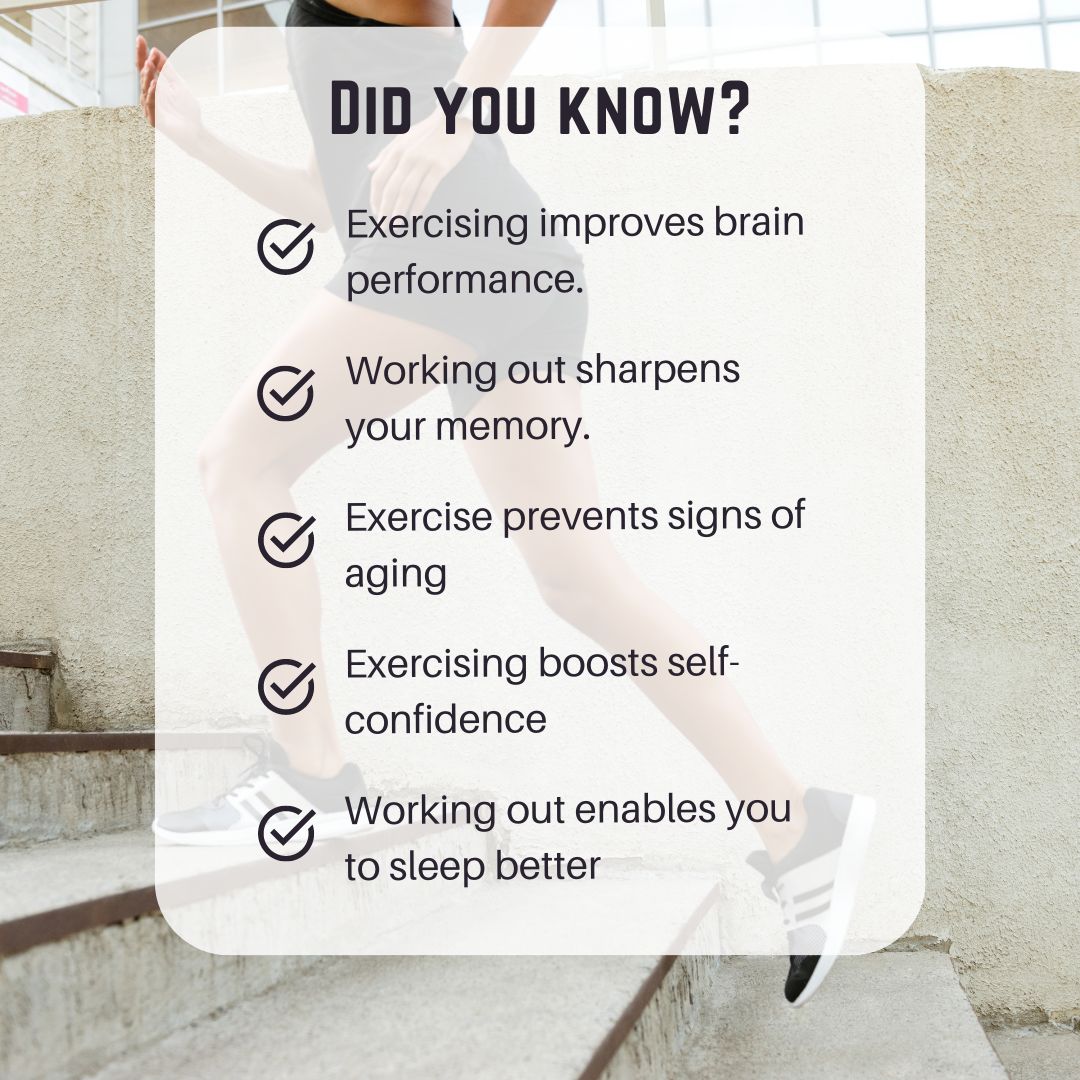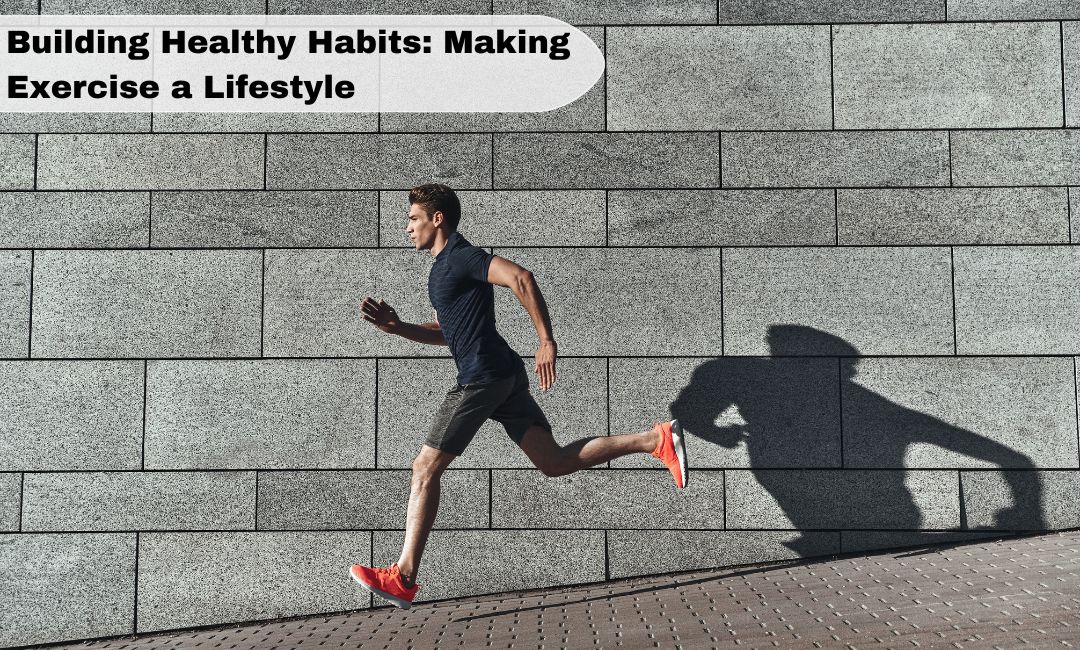Exercise, a fundamental pillar of health, is frequently relegated to the realm of "I'll start tomorrow" or "When I have more time." However, adopting exercise as a lifestyle goes beyond sporadic gym sessions or occasional workouts; it involves a conscious commitment to integrating physical activity seamlessly into our daily lives. Let's delve into how to cultivate a sustainable exercise routine and transform it from a task to a gratifying lifestyle choice.
Importance of Regular Exercise
Physical Health: Exercise helps in maintaining a healthy body weight, reducing the risk of chronic diseases such as heart disease, diabetes, and certain cancers. It improves cardiovascular health, strengthens muscles and bones, and enhances overall physical fitness.
Mental Health: Physical activity is known to release endorphins, neurotransmitters that promote feelings of happiness and reduce stress, anxiety, and depression. Regular exercise can improve mood, boost self-esteem, and alleviate symptoms of mental health conditions.
Boosts Energy Levels: Engaging in regular physical activity increases energy levels by improving blood circulation and enhancing oxygen supply to tissues and cells, reducing fatigue, and improving overall stamina and endurance.
Improves Sleep Quality: Exercise helps regulate sleep patterns and promotes better quality sleep, aiding in falling asleep faster and achieving deeper sleep cycles, leading to a more refreshed feeling upon waking up.
Enhances Cognitive Function: Physical activity is linked to improved brain health, including better memory, increased concentration, and enhanced cognitive abilities. It may reduce the risk of cognitive decline associated with aging.
Supports Immune Function: Regular exercise can boost the immune system, helping the body defend against illnesses and infections. However, overexertion or intense exercise without adequate rest can suppress the immune system, so moderation is key.
Longevity: Studies suggest that maintaining an active lifestyle is associated with a longer lifespan. Regular exercise contributes to overall health and vitality, reducing the risk of premature death.
Social Interaction and Well-being: Participating in group exercises or team sports can foster social connections and a sense of belonging, contributing positively to mental and emotional well-being.

Consulting with a General Physician before starting any new exercise program is highly recommended.
Challenges People Face in Adopting Exercise as a Regular Habit.
Lack of Motivation: Finding the motivation to start and maintain an exercise routine can be difficult. Initial enthusiasm might fade over time, making it challenging to stay committed.
Time Constraints: Busy schedules, work commitments, family responsibilities, and other obligations can make it hard to find time for exercise. Many people struggle to balance exercise with their daily routine.
Setting Realistic Goals: Unrealistic expectations or setting overly ambitious goals can lead to disappointment or burnout. Without achievable milestones, staying committed becomes difficult.
Physical Discomfort: Starting a new exercise routine may cause physical discomfort or pain, especially for beginners. This discomfort can discourage individuals from continuing with their workouts.
Tips for Making Exercise a Habit
Set specific and achievable goals: Define clear and realistic fitness goals that are measurable and attainable. Whether it's running a certain distance, lifting a particular weight, or exercising a certain number of days per week, having specific goals will give you direction and motivation.
Start small and gradually increase: Begin with manageable exercise sessions that fit your current fitness level. As you build strength and endurance, gradually increase the intensity, duration, or frequency of your workouts. This helps prevent burnout and reduces the likelihood of injury.
Schedule your workouts: Treat exercise like an important appointment by scheduling it into your calendar. Set aside dedicated time for workouts and consider it a non-negotiable part of your day.
Find activities you enjoy: Choose exercises or physical activities that you genuinely like. Whether it's dancing, cycling, hiking, swimming, or playing a sport, finding activities you enjoy increases the likelihood that you'll stick with them long-term.
Mix it up: Avoid monotony by incorporating variety into your workouts. Try different types of exercises, workout routines, or classes to keep things interesting and prevent boredom.
Accountability and support: Partner up with a friend, join a fitness class, or hire a personal trainer. Having someone to exercise with or being accountable to others can boost motivation and provide encouragement.
Focus on the benefits: Remind yourself of the numerous benefits of regular exercise, such as improved mood, increased energy levels, better sleep, and overall health. Keeping these benefits in mind can reinforce your commitment to regular exercise.
Be patient and persistent: Developing a habit takes time, so be patient with yourself. Don't get discouraged by setbacks or missed workouts. Instead, focus on getting back on track and staying consistent in the long run.
Making Exercise a Lifestyle
Adopting exercise as a lifestyle choice involves more than just hitting the gym; it's about integrating physical activity seamlessly into your daily routine. Start by finding activities you genuinely enjoy—whether it's dancing, hiking, swimming, or even playing a sport. When you engage in activities you love, exercise becomes less of a chore and more of a rewarding experience. Additionally, setting realistic goals and gradually increasing intensity helps to build consistency and prevent burnout. Consistency is key; establishing a regular workout schedule, even if it's just a few times a week, contributes significantly to making exercise a habitual part of your life. Remember, it's not just about short-term gains but about long-term health and well-being.
Incorporating body movement throughout your day is also crucial. Simple changes like taking the stairs instead of the elevator, walking or biking to nearby places, or doing quick stretching exercises during breaks can add up and make a significant impact. Embracing an active lifestyle involves nurturing a mindset that values movement and acknowledges its importance in maintaining overall health. With patience, persistence, and a positive attitude, making exercise a lifestyle becomes less of a challenge and more of a fulfilling journey toward a healthier you.
Making exercise a lifestyle requires dedication, patience, and a shift in perspective. It's not about short-term goals but rather a long-term commitment to prioritize your health and well-being. By understanding its significance, setting achievable goals, finding enjoyment in physical activities, integrating them into your routine, seeking support, and maintaining flexibility, you can successfully turn exercise into a sustainable lifestyle choice. Embrace the journey and revel in the transformative power of regular exercise for a happier, healthier you.
Consulting with a General Physician before starting any new exercise program is highly recommended.
Recent Blog Topic:
1. High-Intensity Interval Training
2. Role of Exercise in Preventing Heart Disease
.webp)














